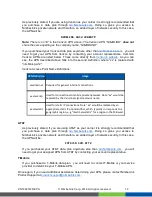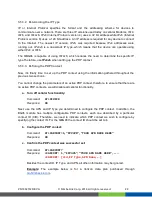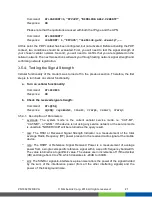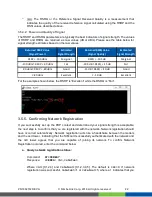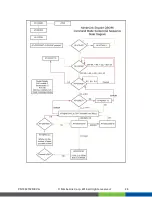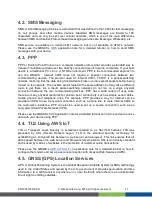
3.5.3.2. Determining the IP Type
IP or Internet Protocol specifies the format and the addressing scheme for devices to
communicate over a network. There are three IP versions used today on cellular Modems, IPv4,
IPv6, and IPv4v6. IPv4 (Internet Protocol version 4) uses a 32 bit address while IPv6 (Internet
Protocol version 6) uses a 128 bit address. An IP address is required for any device to connect
to the Internet. The newest IP version, IPv6, was required because IPv4 addresses were
running out. IPv4v6 is a dual-stack IP type, which means that the device can operate using
either IPv4 or IPv6.
The QBG96 is capable of using IPv4v6, which reduces the need to determine the specific IP
type.Therefore, use
IPv4v6
when setting up the PDP context.
3.5.3.3. Defining the PDP Context
Now, it's finally time to set up the PDP context using the information gathered throughout the
previous two sections.
You cannot change the parameters of an active PDP context, therefore, to ensure that there are
no active PDP contexts, we will disable all cellular functionality.
a. Turn off cellular functionality:
Command:
AT+CFUN=0
Response:
OK
Next, use the APN and IP Type you determined to configure the PDP context. In addition, the
BG96 module has multiple configurable PDP contexts, each one described by a particular
context ID (CID). Therefore, we need to indicate which PDP context we wish to configure by
specifying the context ID. For the QBG96 the context ID should be set to
1
.
b. Configure the PDP context:
Command:
AT+CGDCONT=1,"IPV4V6","YOUR APN NAME HERE"
Response:
OK
c. Confirm the PDP context was successful set:
Command:
AT+CGDCONT?
Response:
+CGDCONT: 1,"IPV4V6","YOUR APN NAME HERE",…...
+CGDCONT: [cid,IP Type,APN Name,….]
Besides the context ID, IP Type, and APN, all other information may be ignored.
Example
:
The example below is for a Verizon data plan purchased through
PN 1002152 REV A
© NimbeLink Corp. 2019. All rights reserved.
20














